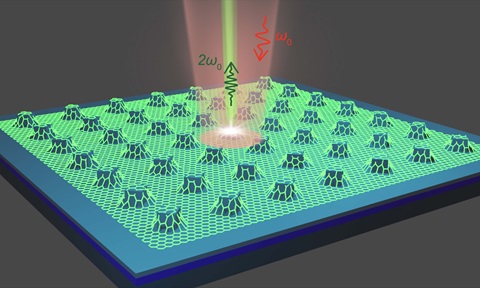
Conformable, Soft Tactile Sensor for Wearables and Smart Electronic Skin Applications
Synopsis
This technology presents a soft and flexible tactile sensor with low operation voltage and ultralow power consumption, designed for use in robotic devices, human-machine interactions and health monitoring devices.
Opportunity
This technology addresses the growing need for soft tactile sensors that operate at low voltage and consume minimal power, making them suitable for a variety of applications. This flexible tactile sensor uses low-cost printing processes, allowing it to adapt to any active surface. The technology supports the fabrication of flexible, large-area sensor arrays and high-density, high-spatial-resolution active-matrix tactile sensors This adaptability and cost-effectiveness opens up significant market opportunities in wearable technology, robotics and healthcare sectors.
Technology
The soft tactile sensor features high sensitivity, with more than 100 kPa-1, and a low detection limit of 1.1 Pa.
It operates at a low voltage of less than 1V and is cost-effective, employing low-cost printing processes and environmentally friendly organic materials. Its conformability allows it to be used on various active surfaces, enhancing its versatility.
Read more about the technology in the media release.
Applications & Advantages
Main application areas include large-area electronic skin applications, smart artificial limbs with tactile feedback, smart artificial skin for texture perception and wearable health-monitoring devices for blood pressure, respirator, and other vital signs monitoring.
Advantages:
Enables accurate detection of small forces.
Ideal for energy-efficient devices.
Adaptable to various active surfaces.
Uses low-cost printing processes.
Uses organic materials, making it environmentally friendly.














/enri-thumbnails/careeropportunities1f0caf1c-a12d-479c-be7c-3c04e085c617.tmb-mega-menu.jpg?Culture=en&sfvrsn=d7261e3b_1)

/cradle-thumbnails/research-capabilities1516d0ba63aa44f0b4ee77a8c05263b2.tmb-mega-menu.jpg?Culture=en&sfvrsn=1bc94f8_1)

7e6fdc03-9018-4d08-9a98-8a21acbc37ba.tmb-mega-menu.jpg?Culture=en&sfvrsn=7deaf618_1)

.tmb-listing.jpg?Culture=en&sfvrsn=3b74ec1c_1)


.tmb-listing.jpg?Culture=en&sfvrsn=414f0d90_1)








